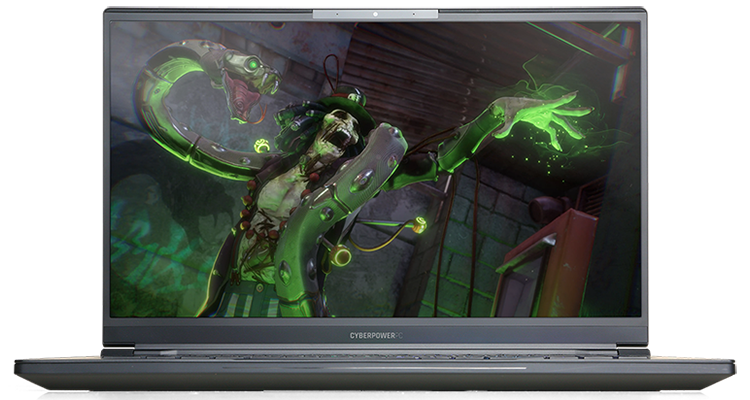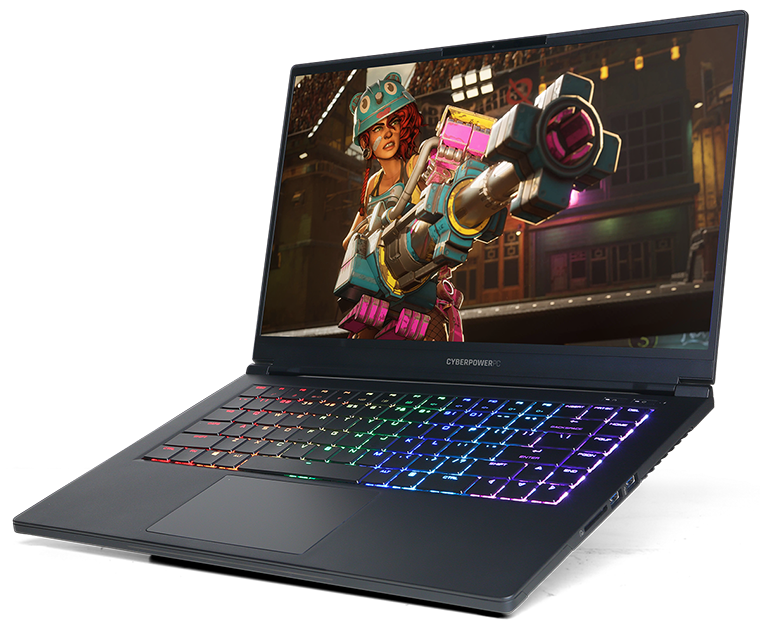Introduction
The global shortage in semiconductors is showing no signs of abating. Whether you're in the market for a new car or a games console, you will find stock hard to come by, as we navigate our way through a perfect storm of supply vs. demand.
Trying to get your hands on the very latest tech is proving particularly challenging, and if you've tired of waiting for a specific part to come in, Cyberpower reckons it has an interesting proposition; why not buy older tech that's readily available at keen price points? Enter the Tracer III Evo HDR-600 Gaming Laptop in for review today.
Priced at £999, this 15.6in laptop won't necessarily break the bank, is in plentiful supply with free UK shipping, and touts an Intel Core i7 processor, Nvidia GeForce RTX graphics and a fast 144Hz display. Sounds rather tasty, but here's the catch; the i7-9750H CPU is from Intel's ageing 9th Gen stable, and the GeForce RTX 2060 graphics have also been superseded by new-and-improved RTX 30 Series. Both CPU and GPU date back to early 2019, so is Cyberpower simply using this opportunity to shift old stock, or does such hardware still hold merit?
We'll get to the benchmarks in due course, but let's start with the build. Cyberpower's 356mm x 234mm x 21.4mm chassis is identified as model QC7 from Chinese ODM Tongfang, and as an off-the-shelf solution it offers reasonably sleek aesthetics in a form factor that slips easily into a rucksack and tips the scales at just under 1.9kg. There is some flex to the display lid, but on the whole the magnesium-alloy body feels well-knitted together, and the matte-black finish will prove inoffensive at either a LAN party or in the office.
The caveat to the QC7 is that some of the key workings aren't as refined as brand-name competitors. The RGB-backlit mechanical keyboard has a spongy feel that I don't find enjoyable - the spacebar feels particularly lethargic - and the good-sized trackpad is just loose enough to exhibit some noise whenever it's touched. That shortage of overall refinement is also present in the twin cooling fans, which are always eager to kick into action and are clearly audible during most tasks.
Truth to be told, SI-based gaming laptops such as this aren't renowned for high levels of sophistication; rather the turnkey chassis is an opportunity to present high-end hardware with minimal fuss. To that end, the 15.6in IPS display supports a 1080p resolution at a fast 144Hz refresh rate (albeit without adaptive synchronisation), downward-firing stereo speakers lack any bass but compensate with decent clarity and enthusiastic volume, and though the 720p webcam above the display panel offers basic image quality, it does have the added benefit of IR sensors for Windows Hello face recognition.
Connectivity is well-stocked, too. In addition to an Intel Wi-Fi 6 AX200 adapter, the laptop presents USB 3.1 Gen 2 Type-A and two audio jacks on its left side, an SD card reader and two USB 3.1 Gen 1 Type-A on the right, plus Thunderbolt 3 Type-C, full-size HDMI, Gigabit Ethernet and a power connector on the rear.
Just about everything the doctor ordered, and there's no obvious shortage on the inside, either. Accompanying the six-core Core i7-9750H processor and 6GB GeForce RTX 2060 graphics is 16GB of dual-channel DDR4-2666 memory, a spacious 1TB WD Blue SN550 M.2 SSD and a high-capacity 94Wh battery. Cyberpower preloads the SSD with a clean 64-bit install of Windows 10, and the firm's standard laptop warranty covers five years of labour, one year of parts and a month of collect-and-return. Upgrading to the silver warranty, at a cost of £19, increases the collect-and-return window to a full 12 months.
There's nothing outwardly remarkable about the Tracer III Evo HDR-600, yet the laptop ought to succeed in delivering high-quality gaming at the native 1080p resolution. The question is whether or not ageing underlying components can be deemed good value at £999. Though the stock situation is changing daily, perusing the retail shelves at the time of writing suggests that newer alternatives are locatable for similar money.
At the same price point Gigabyte's G5 pairs a six-core Intel Core i5 processor with superior RTX 3060 graphics, while MSI's GF66 Katana marries a latest-generation Core i7-11800H with a brand-new GeForce RTX 3050 Ti. Both do feature smaller SSDs, and how long such competitors remain available is up in the air, but the Cyberpower would look far more attractive at, say, around the £900 mark. Let's see what the benchmarks say before coming to a conclusion.












